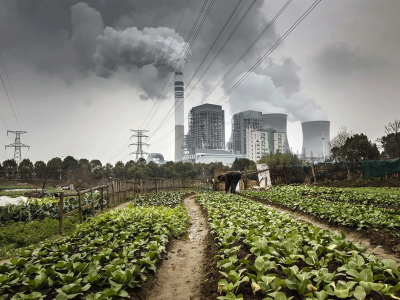
People in New Delhi, India, wait in line for water in June 2024 during a heat wave.Credit: Raj K Raj/Hindustan Times via Getty
It’s official: Earth’s average temperature climbed more than 1.5 °C above pre-industrial levels for the first time in 2024. Climate scientists announced the breach today, signalling that the world has failed, at least temporarily, to avoid crossing the threshold set by governments to avert the worst impacts of global warming. For the time being, it’s just one metric and one year, but researchers say that it nonetheless serves as a stark reminder that the world is moving into dangerous territory — perhaps more quickly than previously thought.
Earth shattered heat records in 2023 and 2024: is global warming speeding up?
“It’s both a physical reality and a symbolic shock,” says Gail Whiteman, a social scientist at the University of Exeter, UK, who studies climate risks. “We are reaching the end of what we thought was a safe zone for humanity.”
The announcement was made jointly by several international organizations that independently track the global temperature. Although each group calculated a slightly different figure, averaged together the data indicate a consensus that, last year, Earth’s temperature hit 1.55 °C above the average for 1850–1900 — considered to be a ‘pre-industrial’ period before humans began pouring large amounts of greenhouse gases into the atmosphere. Unexpectedly, the 2024 figure also shows a statistically significant increase over that for 2023, when heat records were set. Climate scientists are investigating whether the two-year temperature surge is a blip or whether it marks a change in Earth’s climate system that means global warming is speeding up.
Nearly 200 countries signed the Paris climate accord in 2015, agreeing to limit global warming to 1.5 °C above pre-industrial levels. But carbon emissions from fossil fuels and other sources have continued to rise, hitting a record high last year despite the rapid growth of clean-energy sources such as wind and solar power.
“Individual years pushing past the 1.5-degree limit do not mean the long-term goal is shot,” said UN secretary-general António Guterres in a prepared statement. “It means we need to fight even harder to get on track. … Leaders must act — now.”
Hot air
To filter out noise — normal climate variations — from the temperature data, scientists often report a ten-year average. This allows them to zero in on Earth’s long-term temperature trend, improve models and build better projections going forwards. By this measure, researchers estimate that the world has warmed to 1.3 °C above pre-industrial levels, and it could be several more years before 1.5 °C is well and truly breached. That extra time matters.
Is it too late to keep global warming below 1.5 °C? The challenge in 7 charts
“We are still living in a 1.3 °C world” in terms of air temperature, says Katharine Hayhoe, chief scientist for the Nature Conservancy, a conservation group based in Arlington, Virginia. Most of the heat trapped by greenhouse gases is absorbed by Earth’s oceans, land and ice, she adds. By the time the ten-year average for the air tops 1.5 °C, the planet will have accumulated even more heat, further amplifying violent storms and fires, ecosystem damage and sea-level rise.
Scientists stress that there is nothing magical about the 1.5 °C threshold. It is a political target that was included in the Paris agreement in acknowledgement of concerns that an earlier goal of limiting warming to 2 °C might not be strong enough to protect the most vulnerable countries, including island nations at risk of being submerged by rising seas. That does not mean the world is safe below 1.5 °C, nor that everything will suddenly fall apart if it is breached. It’s a spectrum, Hayhoe says, “and every bit of warming matters”.




